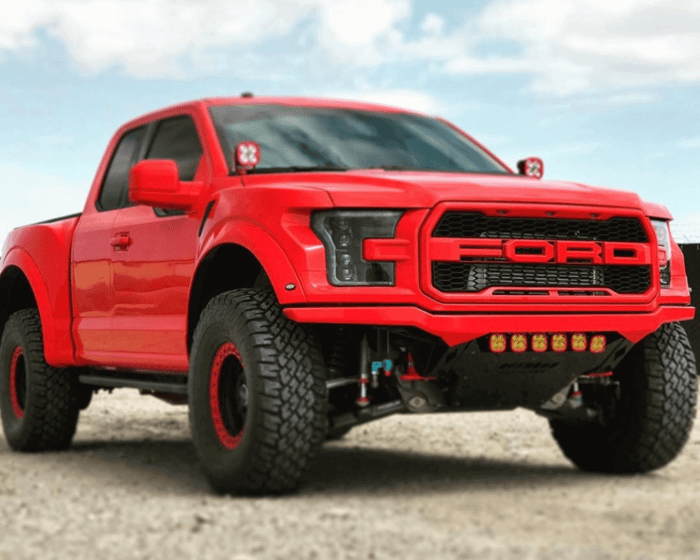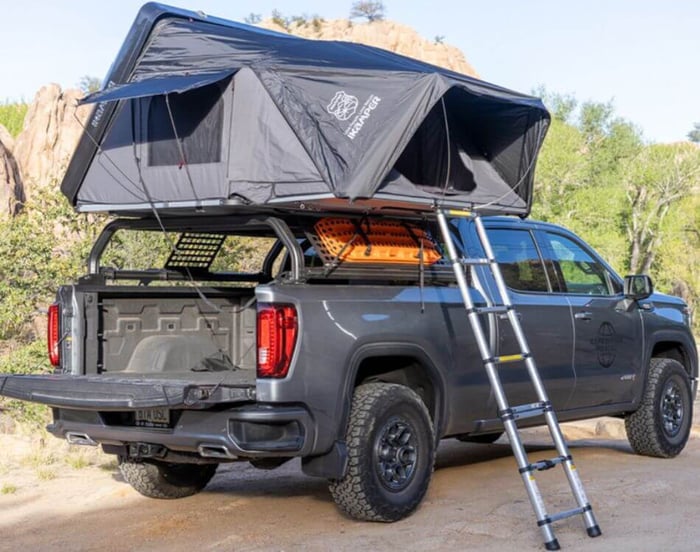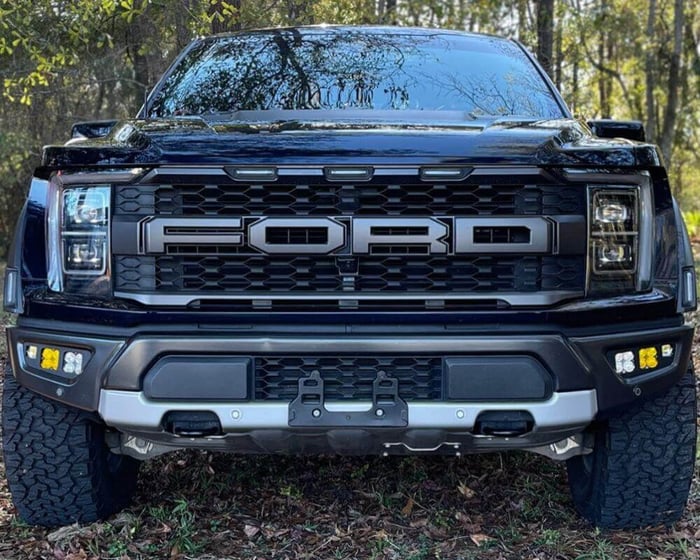
What is Wheel Offset?
New wheels can be the perfect finishing touch to your custom truck or SUV, and understanding truck wheel offset and how it affects your wheeling is crucial to picking the right shoes for your workhorse. The offset can change the geometry involved as your vehicle absorbs big impacts from drops and whoops, alters the way your vehicle handles, and choosing the wrong offset could lead to more wear and tear on your vehicle, leading to a breakdown that leaves you hiking back to the roadway. With the right planning, however, adjusting your wheel offset can help you gain traction, run bigger tires, and better manage the obstacles you encounter in your off-road lifestyle.
What “Wheel Offset” Means
Your wheel is made of a cylinder attached by spokes to a center disk that is bored to fit onto your vehicle’s hub and secure with lug nuts. Offset refers to where the mounting surface on the backside of the center disk (sometimes referred to as the axle pad, inner flange, or mounting hub) falls in relation to the midline of the wheel itself or its deviation toward the front (street-facing) side of the wheel. Your truck’s wheel offset will fall under one of three categories:
- Positive Offset - A wheel with positive offset moves the mounting surface close to the street-facing side of the tire, pulling the body of the wheel in close to the vehicle’s suspension components and potentially even bringing it inside with the lines of your wheel well.
- Zero Offset - These wheels have a mounting surface that rests on the midline of the wheel. While this may seem like a neutral truck wheel offset when ordering new wheels, it’s important to note it may not be neutral in relation to the wheels currently installed on your truck or SUV.
- Negative Offset - Negative offset wheels move the mounting plane further back from the midline of the wheel, pushing more of it out and away from the vehicle. Along with wider tires, this is what gives some off-road vehicles a wider stance.
 You’ll usually see these numbers expressed as a measurement in millimeters with a plus or minus in front of it. For example, “-12mm” is a wheel with a negative offset of 12mm from zero, or not quite a half inch. It’s important to note that the engineers who designed your vehicle did so with the stock wheel offset in mind, so changing your offset can have a dramatic impact on how your vehicle handles and manages the stresses of powering over, through, and around obstacles, possibly going so far as to require other aftermarket truck upgrades to avoid damaging the vehicle.
You’ll usually see these numbers expressed as a measurement in millimeters with a plus or minus in front of it. For example, “-12mm” is a wheel with a negative offset of 12mm from zero, or not quite a half inch. It’s important to note that the engineers who designed your vehicle did so with the stock wheel offset in mind, so changing your offset can have a dramatic impact on how your vehicle handles and manages the stresses of powering over, through, and around obstacles, possibly going so far as to require other aftermarket truck upgrades to avoid damaging the vehicle.
Backspacing
Another number to keep in mind when ordering aftermarket wheels is backspacing, especially when you’re getting ready to go big. Backspacing is measured from the back of the axle pad to the lip on the inside of the outer flange on your wheel–essentially, it’s how far in from the mounting point your wheel comes, expressed in inches. This number can change from wheel to wheel based on both the thickness and the wheel offset. Wheels with lots of backspacing are more likely to rub against other vehicle components as you turn.
Pros and Cons of Negative Wheel Offset
When you install wheels with a negative offset, the wheel itself moves further from the suspension, giving you a wider stance that can increase stability. The wider track can help you better manage uneven terrain, but it comes at a cost. By shifting the fulcrum of your contact point with the ground further from the axis created by your suspension’s geometry, you’re putting more strain and stress on the components. A wider track also means you’re going to be less nimble, requiring more room to turn due to the larger radius. If you push your wheels out far enough, you may also be required to add fender flares or other mods to keep your ride street-legal, depending on the driving laws in your area.
Pros and Cons of Positive Wheel Offset
Moving the wheels toward the suspension, on the other hand, can help you make slightly tighter turns and make your handling feel more nimble, but with a slight loss in stability and increased risk of steering kickback from your narrower track stance. A large shift can still change the geometry your suspension uses when absorbing impacts, but you also increase the risk that the inner edge of your wheel or tire can rub against other components.
Protecting Your Suspension
One of the easiest ways to make sure you minimalize the risk of increased wear on your suspension is by adjusting your truck wheel offset in only small increments–less than 6mm or about ¼ inch–unless you plan on adjusting your suspension’s components to account for the modified wheel offset or backspacing. If you have any questions about whether a vehicle configuration will work or not, talk to an expert (we know a few) who can talk to you about your vehicle, its existing set-up and modifications, and walk you through the measurements needed to make sure you’re getting the right wheel for your build.
Examples of Wheel Offset
A great example of the difference negative offset wheels make versus positive offset models is the 17” VenomRex VR-602, which is available in both +12mm and -12mm options with 6X135 and 6X139.75 bolt patterns, respectively. The Ford Raptor below features a +12mm offset, while the Chevy Silverado has a -12mm offset, helping the wheels stand out further from the chassis. While a total offset difference of 24mm only amounts to about an inch, it is a noticeable change that helps the Silverado keep pace with the wider stance Ford’s engineers built into their super truck.
|
Caption: White Ford Ranger with +12mm offset wheels and 6X135 bolt patterns |
Caption: Black Chevy Silverado with -12mm offset wheels and 6X139.75 bolt patterns |
Related Wheel Accessories
Another option to try out a negative wheel offset without the higher price tag of new wheels is adding spacers. Made from machined metal, they effectively create a negative offset by adding a set amount of space between the axle pad and wheel hub. As an example, Rough Country’s 2015-20 Ford F-150 Wheel Spacers create a whopping 2” of extra space for a much wider stance, so you can try out the feel before looking for custom rims to match or fine-tune your truck build’s performance.
Don’t forget while buying custom wheels that you need more than just the four on the ground. You’ll need to pick up a spare that matches your truck wheel offset, and many off-roaders find that two spares give them more comfortable protection when they’re pushing their vehicle to the limit. We carry wheels from the top brands, so you know you’re getting quality wheels you can count on when the terrain gets rough.
New wheels and tires will come with a learning curve as you find your new air-down sweet spot. An ARB Twin Air Compressor makes airing back up for the trip home fast and easy. The slim, efficient design is perfect for either 12V or 24V onboard installation and packs enough power not only to air up your tires but also to power air tools for quick flat changes or maintenance. Don’t forget the air up/down system that can be bought separately or paired with an ARB compressor for an all-in-one deal.
Your Off-Road Wheel Experts
Our team of specialists is ready to help you make sure you’re getting the wheels you need for the build that gives you the best off-road experience. Stop by one of our installation centers, or call us anytime–days, nights, or weekends. An off-road pro is by the phone to help you with additional parts information, planning guidance, and installation advice. Get your offset truck wheels from Offroad Alliance today.





